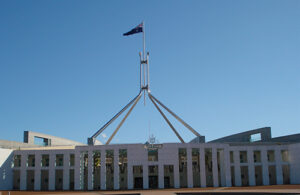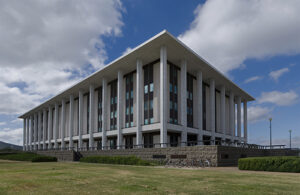Associations and institutions are welcome to apply to become members of the ALCC.
Copyright law has changed significantly since the Statute of Anne.
The sources of copyright law and how copyright happens in practice today are tiered. The modern copyright system plays out at four levels.
International level

International instruments are one part of the modern copyright system.
Photo: Wendy Cope. CC BY 2.0. Full attribution information below.
The international level plays out globally through multilateral international agreements and treaties – such as the Berne Convention for the Protection of Literary and Artistic Works administered by the World Intellectual Property Organisation (WIPO) and the Agreement on Trade-Related Aspects of Intellectual Property Rights (TRIPS) administered by the World Trade Organisation (WTO). In tandem to international agreements, copyright and intellectual property (IP) is often included in chapters of preferential agreements, such as was the case in the Australia–United States Free Trade Agreement (AUSFTA) and the Comprehensive and Progressive Agreement for Trans-Pacific Partnership (CPTPP or TTP-11).
Jurisdictional/country level

International agreements become part of signatory country’s domestic law.
Photo: Feral Arts. CC BY 2.0. Full attribution information below.
Multilateral international agreements and treaties and preferential agreements are interpreted by domestic lawmakers in signatory countries. Through legislative drafting they become part of a country’s law. For example, here in Australia we have the Copyright Act 1968 (Cth). It has been amended numerous times in response to international arrangements.
By extension, courts interpret the law through copyright matters brought before them. The Copyright Act, as well as associated copyright regulations, copyright policy and international copyright issues are managed by the Department of Infrastructure, Transport, Regional Development and Communications (formerly the Department of Communications and the Arts).
Industry level

Organisations seek to comply with copyright through their policies and procedures.
Photo: Ryan Wick. CC BY 2.0. Full attribution information below.
Over time, the impact of legislation and case law filters down the organisational level. Typically organisations and companies develop policies and procedures to manage copyright issues internally as they seek to comply with copyright laws and strive to achieve best practice. Hopefully that’s why you reading our website!
Some good examples of industry best practices can be found in the information that the National Library of Australia publishes on their website, in the policy statements published by the National and State Libraries Australia (NSLA) and the guidelines provided on the Smartcopying website.
Community level

Community and behavioural norms towards copyright are the final level.
Photo: Marco Verch. CC BY 2.0. Full attribution information below.
Finally, copyright plays out in community and behavioural norms. Unfortunately, community norms don’t always align with copyright law. People will often think they have the right to use materials when they don’t, and common and accidental infringements happen everyday.
Your job as librarians and information professionals is to know the difference between the law and norms. The work we do here at the ALCC, including the information provided on this website, is designed to help you effectively navigate that difference.
